How to properly use LEDs for growing
I'm going to start up this thread to help dispel the myth that LEDs are junk for growing. First, a few things need to be cleared up.
First things first - almost every panel you see on the market is using the 7:1:1 ratio - this is horrible for production. Yes, NASA figured it out, but then they recanted and said in their studies that it underproduced, if it produced at all. Yes, it worked awesomely for a vegetative phase, but it had some fairly dismal performance when it came to yield. why? Not enough blue. Find the insolation levels (in terms of wattage, not photon output) of the sun at sea level. Note how red and blue are much more balanced than that 7:1:1 ratio. You'll see the difference as this goes along.
Second - I am a registered medical marijuana patient. Cannabis is one of the most difficult plants to get a large yield from under artificial lighting, and as such, this is what I use for most of my tests. This plant, in many ways, is a "Holy Grail" for horticultural advancement. If it works on this, it will work for most anything else, and if it can yield with this plant, then it will yield for most any other crop.
Okay, that's pretty much everything, let's get started with a picture of my current setup. What you see are my original prototype lights (70:30 blue:red for vegetation only,) some DIY DWC, some manufactured DWC, and an SWC (PC case)
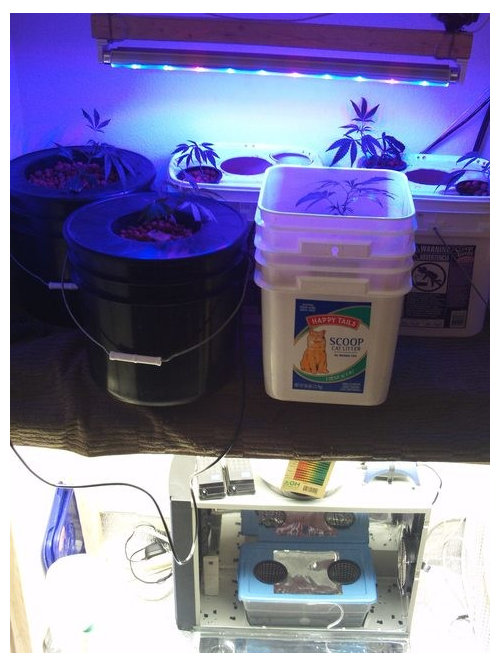
The manufactured buckets are just going to be mother plants - ignore those. What we're going to focus on are the two clones on the back right, in the white DIY multi-site bucket. They are going to go into the PC case. They have only been underneath the LED lights for 7 days. The large amount of blue actually keeps the plants nice and short until my final-design lights get here in a week. I'll give more details on those when they arrive.
One thing usually not taken into account is that a highly-reflective surface is required when you use LEDs - white paint just isn't going to cut it - you need something that reflects EVERY BIT of light. Also, LEDs work more effectively when an old Boy Scout adage is applied - a bunch of smaller fires spread out will heat an area better than one large fire - spread out the lights. Get them on a light mover. Do something to spread the love around.
I will be placing a single 50w panel into the computer case, even though I can fit three in there. having more than 50w of pure plant power in just over one square foot of space is getting close to overkill as-is.
Comments (31)
wordwiz
14 years agolast modified: 9 years ago>> having more than 50w of pure plant power in just over one square foot of space is getting close to overkill as-is. Extremely bright sunlight provides 440 watts of "plant power" (PAR light) per square meter.
Mike
I do not endorse any links added by this forum to this message.
Related Professionals
Rossville Landscape Architects & Landscape Designers · Athens Landscape Contractors · Beverly Hills Landscape Contractors · Dunwoody Landscape Contractors · Fair Lawn Landscape Contractors · Lemoore Landscape Contractors · Wailuku Landscape Contractors · Austin Fence Contractors · Carmichael Fence Contractors · Kirkland Fence Contractors · Laguna Hills Fence Contractors · Madison Fence Contractors · Ventura Fence Contractors · South Pasadena Roofing & Gutters · Minnetonka Roofing & Guttersstruwwelpeter
14 years agolast modified: 9 years agoI do not endorse any links added by this forum to this message.
I don't know what you are talking about because I don't see any such thing. I suspect it is because I did something with IE that involved adding a text file somewhere I can't find now. If I could remember what I did and where, I would tell everybody, but, I don't.
hydrotheoretical
Original Author14 years agolast modified: 9 years agoTo struwwelpeter:
The balance of light is very important, and the insolation of the sun has a near-equivalent balance between red and blue. Please see http://eetd.lbl.gov/coolroof/SPECTRUM.gif
Red is good for photosynthesis, yes, but it's also the primary trigger for photomorphogenesis, and photomorphogenesis won't occur properly without enough blue light to act as the power source - this is still being studied, but we've gotten down to the quantum level of how important blue light truly is, and we know that most of your UFO panels out today just will not do the job.
Next, your barium sulfate study is VERY SUSPECT - the graphs in that linked PDF show reflectivity OVER 100% in several spots for each test, how do you reflect more than 100% of the light you are emitting - you can't, it is thermodynamically IMPOSSIBLE. No, this is not right, this is why 95% polished aluminum sheeting is used in horticultural reflectors. This is why I used 85% Chromalux to line the inside of my PC case.
When I say large yield, I'm talking about the total usable product. That includes, buds, extracted tinctures, pressed trichomes, everything that has a use for medicinal purposes.
To wordwiz:
"Extremely bright sunlight provides 440 watts of "plant power" (PAR light) per square meter."
Outside the atmosphere, The solar constant is the amount of energy from the Sun at the distance of the Earth (outside the atmosphere). It is 1367 Watts per meter squared. It is not really constant; it varies by less than a percent due to solar activity.
(1367 watts) per (square meter) = 126.998456 watts per (square foot) and that is OUTSIDE the atmosphere. Inside the atmosphere at sea level, it's more like 109 watts per square foot, and when that breaks down into PAR, only about 40 watts per square foot is usable by plants.
wordwiz
14 years agolast modified: 9 years ago>> "Extremely bright sunlight provides 440 watts of "plant power" (PAR light) per square meter."
Outside the atmosphere, The solar constant is the amount of energy from the Sun at the distance of the Earth (outside the atmosphere). It is 1367 Watts per meter squared. It is not really constant; it varies by less than a percent due to solar activity.
(1367 watts) per (square meter) = 126.998456 watts per (square foot) and that is OUTSIDE the atmosphere. Inside the atmosphere at sea level, it's more like 109 watts per square foot, and when that breaks down into PAR, only about 40 watts per square foot is usable by plants. The figure is derived from per foot-candle of light intensity. The intensity of a FC does not vary. And it is the watts per square meter of PAR light I refer to. The total amount of energy per square meter (not PAR light) is about 2.3 times more.
Mike
I disavow any connection to links or ads this forum may add to my message. It's a horrible way to earn a few dollars and, IMO, will drive people away from participating.
hydrotheoretical
Original Author14 years agolast modified: 9 years agoThe figure is not derived from the foot candle, by any means. Please see Nimbus 7, Solar Maximum Mission, Upper Atmosphere research Satellite, and more at the NASA Goddard Space Flight Data Archive Center, so you may see how those power mesurements were obtained and weighted.
Also, I notice a lot of your posts mention lumens - lumens as lights are rated by is weighted at 550nm - green light, something plants do not use and thus is an inaccurate and unreliable measurement without accompanying irradiance charts showing each emission peak and at which wavelength the peak occurs.
The proper measurement is in microeinsteins per meter squared per second for each photosynthetically active wavelength being emitted. Expressed in a formula, that would be umol/m/s-1 @ (x)nm
wordwiz
14 years agolast modified: 9 years agoPlease see "Ligh-ting Up Profits" which is edited by Paul Fisher and Eric Runkle, a couple of guys who have a reputation as actually being experts in their field. I quoted how many watts of PAR a footcandle of sunlight provides as you said "having more than 50w of pure pl-ant power in just over one square foot of space is getting close to overkill as-is."
I seldom mention lumens, at least in talking about light intensity. Lux or Footcandles? Yes. But not lumens unless comparing what a bulb claims.
A microeinstein is 6.02x10^17 photons of PAR light per square-meter per second. The formula is correct, not microeinsteins per square meter per second for PAR light as in your text.
Mike
I do not condone any links or pop-up ads this forum's software adds to my posts and feel it is completely wrong, not to mention annoying. Thus hyphens in words where they do not belong.
struwwelpeter
14 years agolast modified: 9 years agogreen light, something plants do not use
That's dead wrong and you said it after I gave you action spectra that proves it.
struwwelpeter
14 years agolast modified: 9 years ago
The balance of light is very important,Yes, but blue light is relatively important, otherwise, people wouldn't be using regular HPS which has very little blue light. Blue objects will appear black under HPS street lights. Only a small amount of blue is necessary for the synthesis of chlorophyll and other pigments.
BTW, your cannabis plants look weak and spindly.
struwwelpeter
14 years agolast modified: 9 years ago
Yes, but blue light is relatively importantThat should have been,
Yes, but blue light is relatively unimportant
taz6122
14 years agolast modified: 9 years ago"BTW, your cannabis plants look weak and spindly."
I have to agree. I have seen many plants with shorter internode length and thicker stem grown under HPS and MH.
hydro you're trying to save a buck on your electric bill and it just won't work with LED. LEDS need much more improvement. You should try T5HO or VHO if you don't want to use HPS/MH.hydrotheoretical
Original Author14 years agolast modified: 9 years ago"A microeinstein is 6.02x10^17 photons of PAR light per square-meter per second. The formula is correct, not microeinsteins per square meter per second for PAR light as in your text. "
When you express irradiation using the Einstein, PAR is irrelevant because the Einstein is measured without regard to frequency. Irradiance is measured in Einsteins per square meter per second, if the frequency is specified, for example when you use a monochromatic source, such as an LED, or an unfiltered mercury-gas tube. You only measure PAR when you're dealing with the usable light provided to a plant.
"That's dead wrong and you said it after I gave you action spectra that proves it. "
I guess that's why I use pure green light in my flowering cabinet and never disturb the photoperiod? That's why they make pure green T5HO lights for illuminating a room for working during the dark period? I also like how your quoted spectra notes that the response to blue versus red was higher in arboreal versus herbaceous plants right at the very top - Cannabis is an herbaceous plant, as are most crop plants, minus nuts, fruit trees, etc. Also, that study was done in 1975 - back then they determined response by the fluorescing of chlorophyll to certain wavelengths of light to get a quantum yield - now days, we use things like the exchange of CO2 versus O2, which is a much more accurate representation of how much actual photosynthesis is taking place, and is much more easily quantifiable. I think LiCor has devices that do precisely this.
"BTW, your cannabis plants look weak and spindly."
I COMPLETELY AGREE WITH YOU. They're fresh-cut clones, barely a full week transplanted (barely had roots out of the rockwool,) and I would expect three to be somewhat runty (the ones in the multi-site buckets,) as the fool who took the clones rooted those three in a single 1" rockwool cube. I had to be delicate separating the rockwool and sliding roots out without breaking too many. They've barely taken root, allow me to get more time to remedy his fallacy, and here's some more pictures. I don't think that a 10mm avg. internode length is all that large after all for the Krusty Bucket, and in this short period of time since I got the clone and transplanted it, it has grown about 30-40mm, to now have the crown peer over the lip of the bucket. The fresh growth you see at the tops of the other clones is fairly compact (some were WAY out to the side for a while before I could make my 'table' more stable and thus group them closer together.)
[IMG]http://imgur.com/9GjSvl.jpg[/IMG]
[IMG]http://imgur.com/lgsiDl.jpg[/IMG]
[IMG]http://imgur.com/I9APwl.jpg[/IMG]
[IMG]http://imgur.com/z1Etml.jpg[/IMG]
[IMG]http://imgur.com/9IMRKl.jpg[/IMG]
[IMG]http://imgur.com/GKyRjl.jpg[/IMG]
Just give me time, I'll show you the results. This is also not my intended light, as I stated in my original post. My real lights, with a different spectrum (these T8 lights were meant for non-flowering herbs in a short-stacked NFT system) will arrive very soon and you will see a difference.
Just give it time. :)
hydrotheoretical
Original Author14 years agolast modified: 9 years agoMy fault for failing on the links. I forget this is not a board that uses IMG tags.
struwwelpeter
14 years agolast modified: 9 years agoNext, your barium sulfate study is VERY SUSPECT - the graphs in that linked PDF show reflectivity OVER 100% in several spots for each test, how do you reflect more than 100% of the light you are emitting - you can't, it is thermodynamically IMPOSSIBLE.
It clearly says, "Figure 1 - Reflectance ... Spectralon was set as 100%." The author's intent was to compare their paint with Spectralon. In the Introduction, the authors state that a standard made with Spectralon has 99% reflectance. The main fault of the authors was that their wording wasn't idiot proof.
Also, that study was done in 1975 - back then they determined response by the fluorescing of chlorophyll to certain wavelengths of light to get a quantum yield - now days, we use things like the exchange of CO2 versus O2, which is a much more accurate representation of how much actual photosynthesis is taking place, and is much more easily quantifiable.
It says right in the Abstract that those action spectra were based on CO2 uptake. If you have more reliable action spectra, show them.
I guess that's why I use pure green light in my flowering cabinet and never disturb the photoperiod? That's why they make pure green T5HO lights for illuminating a room for working during the dark period?
You said, "Also, I notice a lot of your posts mention lumens - lumens as lights are rated by is weighted at 550nm - green light, something plants do not use and thus is an inaccurate and unreliable measurement without accompanying irradiance charts showing each emission peak and at which wavelength the peak occurs." That was within the context of photosynthesis (PAR), NOT photoperiod.
Your pretense and prolific use of Weasel Words indicates that you are not someone to be trusted.
hydrotheoretical
Original Author14 years agolast modified: 9 years agoThis is strange - I posted a full picture with a better action spectrum - and the entire post I made to respond to you is gone, even though I saw it post and the screen refresh to indicate this fact.
Oh well, here's a link to the image instead - http://imgur.com/Liuf3.jpg
wordwiz
14 years agolast modified: 9 years agoYour image and a buck twenty-five is worth enough to get a cu-p of cof-fee at McDonalds, unless you can cite where the study comes from, how absorption was measured and other pertinent info. For instance, your chart implies that Far Red light is too low to matter, which simply is not true. It is very important, as is the 610 nm range which you claim is low.
I can say a big dog is a horse but that doesn't mean I can ride it in a rodeo.
Mike
It's a shame I have to add hyphens to words to keep links to ads I do not condone from being attached to MY messages.
struwwelpeter
14 years agolast modified: 9 years agowordwiz, I am going to guess that is valid for absorption of chlorophyll a and/or b:
{{gwi:1020509}}
During photosynthesis, those wavelengths with near zero absorption above are absorbed by accessory pigments during photosynthesis, some of which are shown here:wordwiz
14 years agolast modified: 9 years agostruw,
You are probably correct, but posting something that says "this is how plants absorb light" or something similar and then is actually talking about just a small area of plant growth is so wrong.
That's the problem - too many people look at only one area of growth. They come up with the notion that green (530-550 nm) light is worthless. Not true. Plants absorb some of it, just not as much as other spectrums.
As for the idea that the percentage of blue lights be increased - my tests say that blue is 4.5 times stronger than red so a 8:2 ratio of red to blue will have mo-re blue light (in terms of watts/sq. meter) than red.
I wish I knew how to build a LED light and had access to bulbs across the entire spectrum.
Mike
hydrotheoretical
Original Author14 years agolast modified: 9 years ago"Your image and a buck twenty-five is worth enough to get a cu-p of cof-fee at McDonalds, unless you can cite where the study comes from, how absorption was measured and other pertinent info"
That information is property of my company and thus not something to be freely discussed, as much as I'd like to because I love to share information, I have to keep that information under-wraps to maintain a competitive edge. I am well aware that other wavelengths will allow for different morphological responses and biological timings. Again, that information is trade secret and what I use for designing custom lighting for each plant species. I make green-to-orange lighting for the biofuels industry, for those that grow algae indoors in a light-proofed environment. Those algae respond most favorably to that range of light, regular blue/red growing lights do almost nothing.
Also a noted side effect of my LED lights related to what was stated above - even with the reservoirs that have large holes allowing direct exposure to light - no algae growth, unlike with my T5HO lamps.
"As for the idea that the percentage of blue lights be increased - my tests say that blue is 4.5 times stronger than red so a 8:2 ratio of red to blue will have mo-re blue light (in terms of watts/sq. meter) than red."
Just because blue light is at a higher energy potential does not necessarily mean you're getting the proper photon density at that wavelength - you're looking for photon flux density. Also, many important phytochemical reactions require a great deal of blue light, and the dismal ratio of the 7:1:1 panel shows. A 150w HPS grew better and larger tomatoes than a 90w LED panel with that sub-optimal ratio, and it should have stomped it by all means. There are a few dedicated forums to LED growing - even they have noticed they've needed much more blue than believed.
"It's a shame I have to add hyphens to words to keep links to ads I do not condone from being attached to MY messages."
This I have started noticing, as well. Every single instance of the word 'plant' in any post has some Bing search ad attached. Very intrusive. Time to update my adblock rules after viewing the page source to see where the ads are coming from.
wordwiz
14 years agolast modified: 9 years agohydro,
With all due respect, posting a chart that claims things then saying you cannot post anything to back it up because it is a "tra-de secret" is more lame than a one-legged field goal kicker.
Have you done grow tests to compare production, dry mass of harvested plants, anything to support your claims? Or are those "tra-de secrets" too?
My olfactory sense is not 100 percent but close and I smell a rat. You come here posting how LEDs should be built but refuse to provide veritable data to back your claim.
But I will try to answer your claims, though it will be maybe six-eight months for the final results. I'll grow plants from the same seeding, in the same mix of soil, using the same temps and watering regimen. One group under a 120-watt LED and the other under a 400 watt HPS. My bottom line is total weight of the fru-its produced, but I will note the internode length, dates of first blooms, dates of first ripe fru-it. Anything else, beside the wavelength and number of LED lights I should consider? And will you do the same with your panels?
Mike
Darn it, I hate having to edit my posts to get rid of links I may not condone.
taz6122
14 years agolast modified: 9 years ago"It's a shame I have to add hyphens to words to keep links to ads I do not condone from being attached to MY messages."
"This I have started noticing, as well. Every single instance of the word 'plant' in any post has some Bing search ad attached. Very intrusive. Time to update my adblock rules after viewing the page source to see where the ads are coming from."
Block anything with "intellitxt.com" in it.
hydrotheoretical
Original Author14 years agolast modified: 9 years ago"Have you done grow tests to compare production, dry mass of harvested plants, anything to support your claims?"
On a dry yield, no, as most of our targeted plants are used fresh (basil, cilantro, parsley, lettuce, etc) Wet, yes. On a trial run of African basil (which the lights currently illuminating my cannabis plants were originally designed for,) I attained growth under that 20w nearly comparable to 96w T5HO array using 4 24w 6500K Agro-Max tubes. That is just at home. Here: http://imgur.com/xiqMp.jpg
If you wanted something that is typically measured dry, I'm quite sure Google would have plenty of answers and cited journals in Google Scholar - perhaps you should look there. Plenty of information I've read on there pretty much follows exactly what I'm saying all along - most of today's typical UFO panels have too little blue, and it hinders development.
"You come here posting how LEDs should be built"
The original topic was how to use LEDs properly. At least that is what it says at the top of my web browser "How to properly use LEDs for growing - Growing under Lights Forum - GardenWeb" I do not think I mis-titled my own post. If I wanted to discuss how LEDs should be built, I would be posting diagrams of new p and n junctions, and talk about diode composition, and lambertian radiation patterns. I'm not here to talk about that, I do that at another forum.
"but refuse to provide veritable data to back your claim."
I haven't even started the grow to show and you're already dismissing me before I give a demonstration, which this thread is all about. Pull up a chair, sit down, enjoy the show, comment afterwards.
"My olfactory sense is not 100 percent but close and I smell a rat."
Always the doubters and naysayers that have to resort to negative words.
"Anything else, beside the wavelength and number of LED lights I should consider?"
If you want to do a comparison, follow my method - single mother plant, cut same-size clones (six inches.) 12/12 directly from roots being visible from the bottom of the rockwool cube. Put clones in the systems to be used for testing. It is how I do most of my tests (besides algae, which I use tissue culture methods.) For your blooming panel, follow a 40:30:30 ratio of 460:660:630, which is my panel specification for all my 50w+ units - your LED placement in the panel for optimal blending is up to you. I am using 1w diodes, and if you must know the diode manufacturer it's Seoul Semiconductor, just so we can do a more even comparison.
wordwiz
14 years agolast modified: 9 years ago>> "Have you done grow tests to compare production, dry mass of harvested plants, anything to support your claims?" >>> On a trial run of African basil (snipped) Here: http://imgur.com/xiqMp.jpg I tend to use the same kind of containers, since we have-cats! But nothing that says how old the plants are. If they have been in hydro for a week, very impressive. If they have been there for six weeks, very weak.
>> "You come here posting how LEDs should be built" >>> The original topic was how to use LEDs properly. At least that is what it says at the top of my web browser "How to properly use LEDs for growing - Growing under Lights Forum - GardenWeb" I do not think I mis-titled my own post. You are splitting hairs. Re-read your first message, you talk about the ratio of Blue:Red.
>> "but refuse to provide veritable data to back your claim." >>> I haven't even started the grow to show and you're already dismissing me before I give a demonstration, which this thread is all about. Pull up a chair, sit down, enjoy the show, comment afterwards. If you haven't started the grow, how can you claim one system is better than the other???
>> "My olfactory sense is not 100 percent but close and I smell a rat." >>>Always the doubters and naysayers that have to resort to negative words. As well as people who do not accept as gospel what someone posts.
>
>>> If you want to do a comparison, follow my method - I said "besides" because the ratio of spectra and bulb placement is not in my control. I'm buying the panel prebuilt.
Hopefully, I will have my panel by Monday and I have enough plants to test its supposed coverage area. All of them are cuttings, some close to a month old with a huge amount of roots, some were cut two weeks ago and are just now growing roots.
But the real test will start late this spring when I use the same group of seedlings, in the same soil mixture, under the same amount of light, growing in the same environment. Then I will be able to base how the LED panel compares to a 400 watt HPS. Not how it might do if I have way mo-re blue but I pretty much know the average yield of a tomato plant. Plus, I am doing a grow test with basil and the all-blue 14 watt panel is doing good, but the all-red and the red/blue as well as the CFL and HPS systems are doing much better.
YMMV,
MIke
hydrotheoretical
Original Author14 years agolast modified: 9 years ago" But nothing that says how old the plants are. If they have been in hydro for a week, very impressive. If they have been there for six weeks, very weak. "
At that point and time, three weeks - African basil is very woody and slow growing.
"If you haven't started the grow, how can you claim one system is better than the other??? "
I've done test grows comparing HID to T5HO to Induction Lighting to LEDs, for almost half a decade, now. I'd tell you more but doing so violates this sites advertising rules.
"I said "besides" because the ratio of spectra and bulb placement is not in my control. I'm buying the panel prebuilt. "
Then keep in mind that you're better off with smaller panels spread about than one large panel.
"Plus, I am doing a grow test with basil and the all-blue 14 watt panel is doing good, but the all-red and the red/blue as well as the CFL and HPS systems are doing much better. "
Of course - red does better for photosynthesis - blue builds bulk. Can't put on bulk without photosynthesis occurring.
wordwiz
14 years agolast modified: 9 years ago>> I've done test grows comparing HID to T5HO to Induction Lighting to LEDs, for almost half a decade, now. I'd tell you more but doing so violates this sites advertising rules. No it doesn't.
I'm doing a test grow now, using Genovese Basil and no one has smacked me down.
BTW, in Week II, the plant(s) under the all-red, while taller, are probably the worse plant(s).
Mike
hydrotheoretical
Original Author14 years agolast modified: 9 years ago"BTW, in Week II, the plant(s) under the all-red, while taller, are probably the worse plant(s)."
That has been my experience as well, both for LED and primary-color T5HO (pure red tubes, no filters, just red phosphors.)
My plants are looking better, BTW - I agreed they looked like crap before, thanks to the person that took the clones. The one in the rock bucket is about 170mm (counting the true top, not the fan leaves that extend past the actual apical tip.) That is the one I'm watching for now since I'm still waiting on my manufacturer to get me my lights (big order holdup, excuses excuses excuses) hopefully I'll have them within two weeks. By then, I'll have likely had to cut fresh clones for the PC box, as the originals will have gotten too large for me to effectively train and thus I will have to start again. :( I moved the lights up for the picture, the camera just won't pop a powerful flash (stupid non-adjustable auto-flash) with the lights down so close.
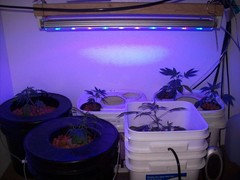
struwwelpeter
14 years agolast modified: 9 years agoprimary-color T5HO (pure red tubes, no filters, just red phosphors.)
Where did you get them and how much did they cost? I have a large assortment of single phosphor 40 watt T12 fluorescents that I bought custom made from Sylvania over 30 years ago.
dsws
11 years agolast modified: 9 years agoSome good stuff in this thread, so I guess I'll bump it, and try to summarize/elaborate.
Plants can use any wavelength in a range that roughly (but not exactly) corresponds to the range of visible light. But they don't use all light equally well.
When we use lights (LED or otherwise) for growing plants, we want to spend as little electricity as possible to give the plants as much metabolic energy as possible, while meeting their other needs (recognizing day length, recognizing that light levels are adequate so they don't get etiolated, etc.).
Light of different wavelengths contains different amounts of energy per photon, proportional to the frequency. Plants can absorb and use photons of any wavelength in the the photosynthetically-available range, but not with equal efficiency.
When a photon of any wavelength is absorbed, the energy is transferred to one of two molecules, P680 and P700. The numbers correspond to the wavelength associated with the amount of energy they can accept. The additional energy from shorter-wavelength photons is wasted. That's why the action spectra in struwwelpeter's post slope so much from left to right.
Then there's the Emerson effect and the Z-scheme. The two molecules P700 and P680 work together. Photosynthesis requires both energy in the form of ATP and reducing power in the form of NADPH. For photosynthesis, it takes one unit of energy each delivered to P680 and P700. For other energy use in the photosynthesizing cell, it can use just a unit transferred to P680.
So for maximum energy efficiency, we would provide light in a mix of red just shorter than 680 and far-red just shorter than 700. But that's efficiency relative to the energy in the light, and we want efficiency relative to the electricity we put in.
Fwiw, I like LEDs. I think they ought to be the most efficient, in terms of providing the wavelengths plants need for the least energy. They are expensive up-front, though. I only have a few houseplants, and I give them a little supplemental light with a mix of LEDs and ordinary cheap CFLs.
overdrive
11 years agolast modified: 9 years agour cannabis plant looks really weak and dwarfed. i get much better results using just HPS, which is just basically yellow/orange lights. the plants have a lot of different pigments that lets them use all wavelengths.
eircsmith
11 years agolast modified: 9 years agoLED had potential and it has proven in the process and there price are concern at the moment which makes building led grows on a large scale. I had found the blue spectrum range of 420nm and red at about 680nm that is the highest range of use during photosynthesis but in between those range will be useful hence that why folks use 5000K fluorescent, blue for vegetation and red (MH and HPS) for flowering.
MWHydroLED
10 years agolast modified: 9 years agoI have been growing house plants under pure LED for the last 18 months. They WORK! I've never ran HPS/MH, but compared to friends that grow similar plants under them, my results grow 15-30% faster and hardier. I run a home built aeroponic misting system using A combination of General Hydroponic's Flora-series, with FoxFarms Open Sesamie, Beasie Bloomz and Cha-Ching for continuous flower production on Coleus, New Guinea Impatients, Basil and Lady Fingers. Occasionally I rotate in an impatient or Geranium (Apple) for friends.
Propagation of seedlings and clones is done in a 2x3x4 dedicated tent with a cool white 4' CFL bulb and a "grow light" bulb in a single housing. No nutrients are fed to the roots in a dedicated 15 gallon aeroponic propagation tub, but it is heated to 78F and air bubblers oxygenate the root zone for faster root development than could be done if I only used rooting hormone (which I also use). 4 to 6" tap roots from split seeds or 8-10" of clone roots in 6 days.
The main flowering tent is 4'x8'x8' lit purely with 3 LumiGro Pro 650s. Most times only 2 are running unless we get a large order and need to keep up with higher PPM to push the plants.
Root zones are black plastic 5-gallon buckets with provisions for 3 180deg misters per bucket. 7 buckets per nutrient feed, 3 seperate rows of 7 buckets per to dialing in different species needs.
When running all 3 lights CO2 is enriched up to 900ppm. This is more to help the plants handle the hydro exchange than for photosynthesis, but it does help.
With zero CO2 and 2 lights running all 8' of tent, we achieve 32-48" of vertical growth in the Coleus EVERY 7 DAYS! Each plant produces approximately 16 of these shoots per cutting for around 100-115 cuttings ready to root and sell every week.
With all lights going and on CO2, this goes up by appx 25%. Too much for our rooting setup.
And as far as depth on LEDs goes: we have found zero differentiation between upper flowers and lower flowers from lack of light. Our lights stay at maximum height constantly, approximately 5.5ft from the bucket tops, and even with crowding we have great leaf and flower structure clear to the "ground plane" and below.
Ps: first post, don't see a link for including photos, but I have proof of these claims.


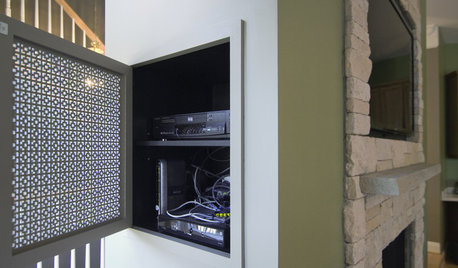
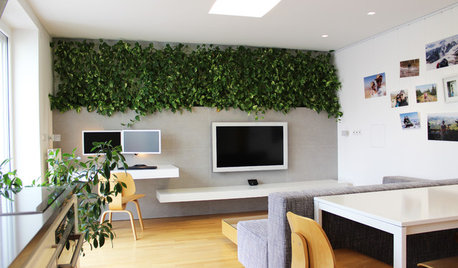


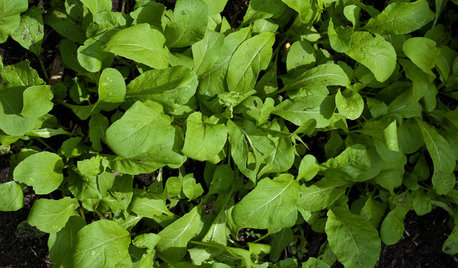
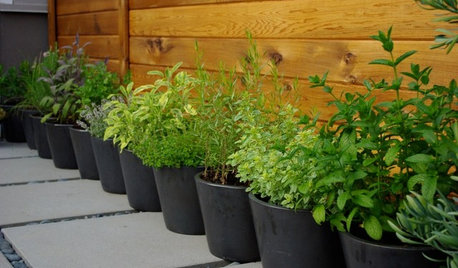
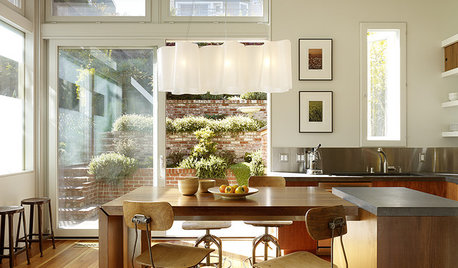
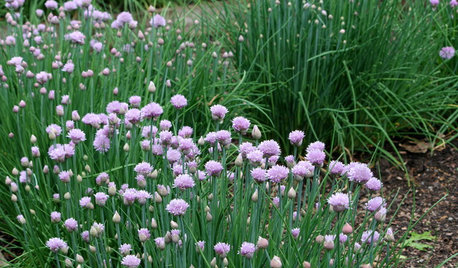






struwwelpeter